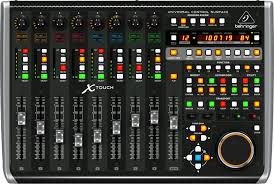I was introduced to ‘Sends on Faders’ with my XR18 and the X-Air Edit software mixer. I didn’t really understand the power, but it certainly made it easy to adjust effect send levels.
Logic Pro (X) brought us ‘Sends on Faders’ in version 10.4.2. A new workflow is now possible.
I have to couple the ‘Sends on Faders’ discussion with a better understanding of using multiple mixer windows in a screenset. I can create multiple, different mixer windows and toggle between them with the ‘Cycle Through Windows ⌘`’.
On the left side of the screen I have the mixer window set to ‘Tracks’ with all of my summing stacks (bus folders, however you want to call them — AUX channels with a bus for input) collapsed giving me 24 channel strips. On the right side of the screen I have a mixer window set to ‘Single’ which will show all of the channels involved in getting sound from the selected channel to the outputs.
I can simply select a channel in the left window and the right window changes to show me the actual channels involved. The X-Touch follows the mixer view, so when I select the left window I have the faders and controls ‘under hand’.
I have an extended keyboard plugged in to the X-Touch so I can use key commands to change views.
Next on the reading list is a much deeper read of the Control Surfaces manual to understand the various methods of using the SEND functions on the X-Touch — much to learn.
I am actively involved in discussions on gearspace.com about the joys of the X-Touch
Behringer X Touch with Logic Pro — Gearspace.com
Hope you’re all well. Recently I bought an X Touch (universal Control…). I read (and seen on youtube) that it’s suppose to work pretty much as is out of the box with LPX.
I have found “Sends on Faders” in the Mackie Control world — SEND button plus F7
Mackie Control alternate Send edit mode options in Logic Pro — Apple Support
V-Pot 7 or F7 — Switches to Destination/Level Mixer view. In this mode, you can control one Send slot for all channel strips. Each channel strip corresponds to the channel strip name shown in the upper LCD row.
huge.

